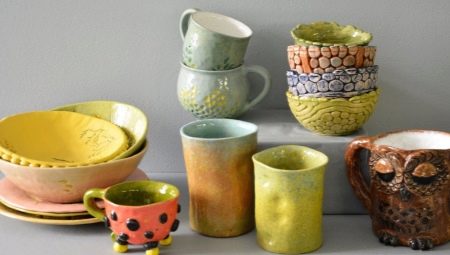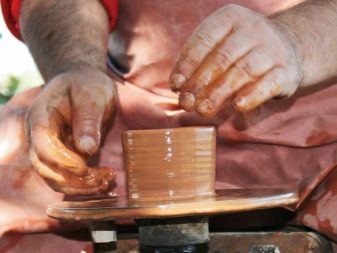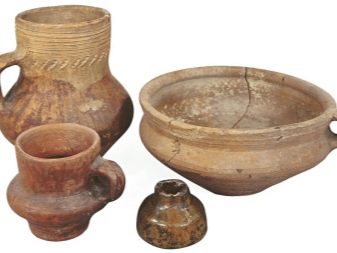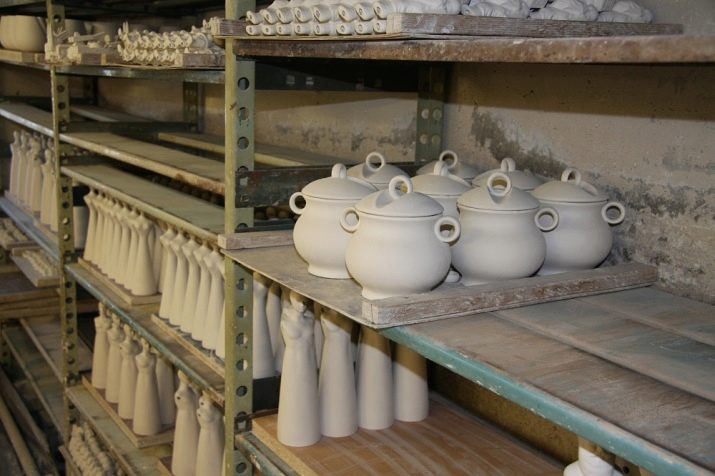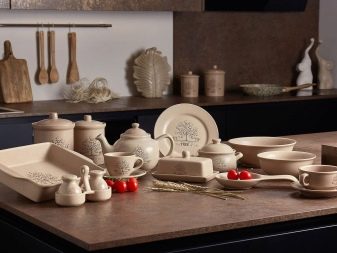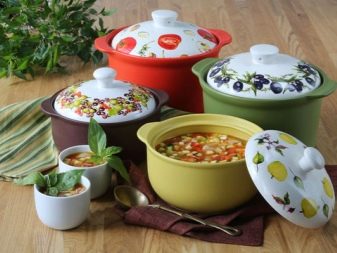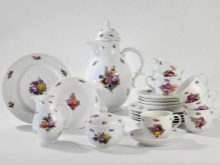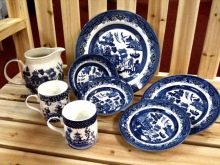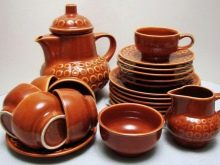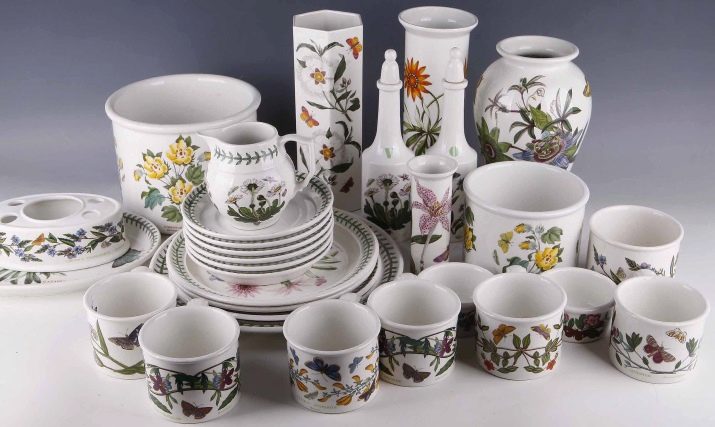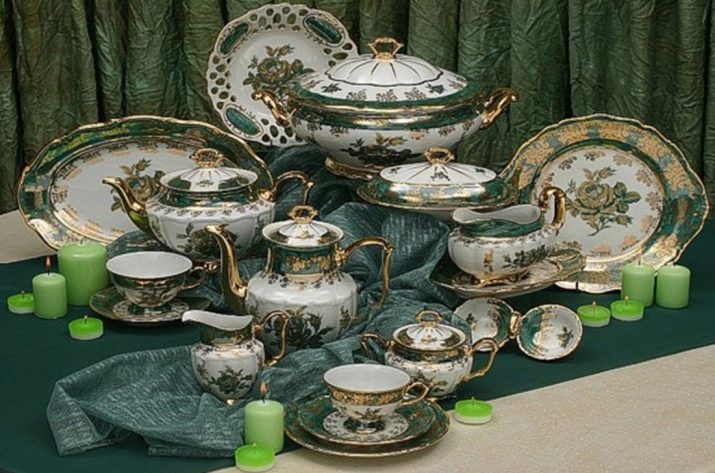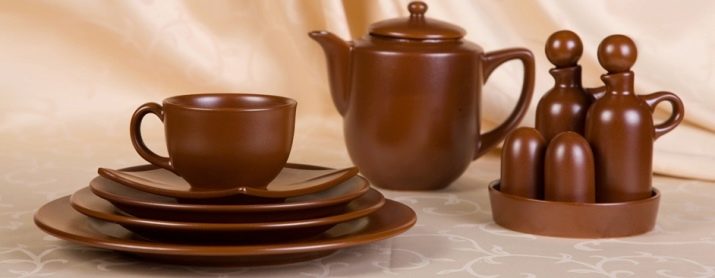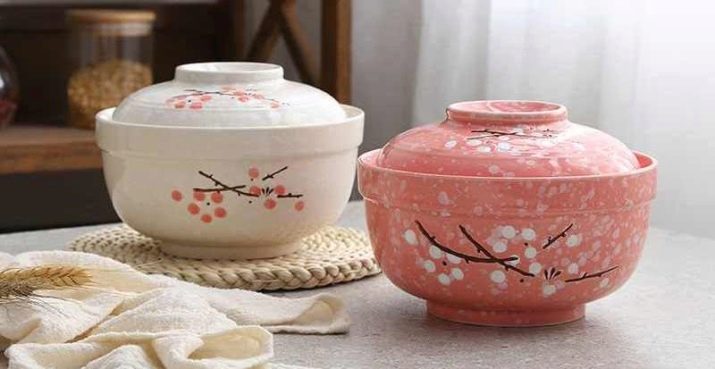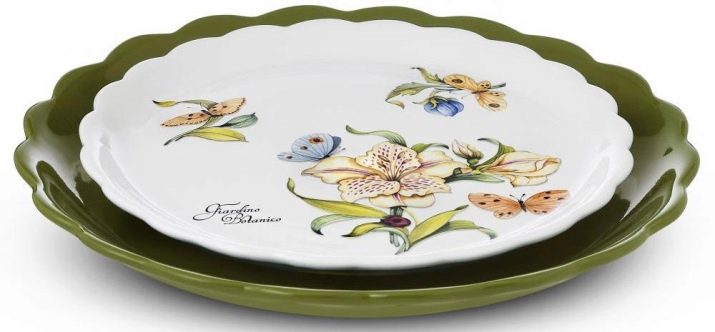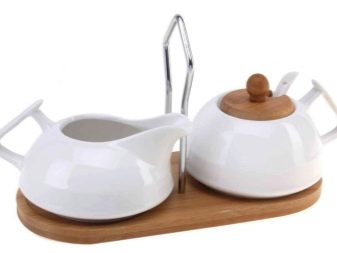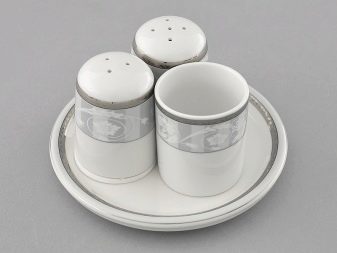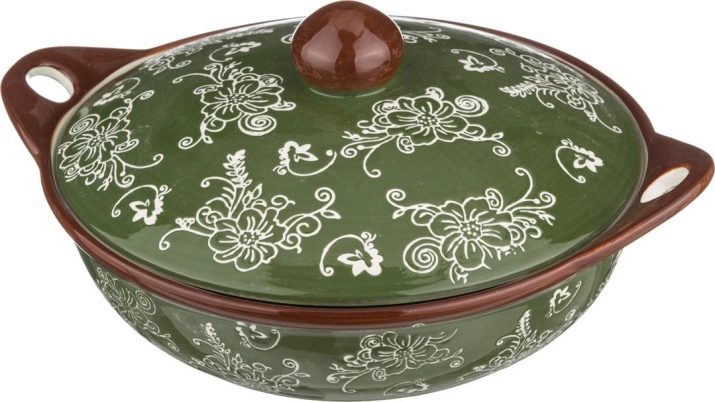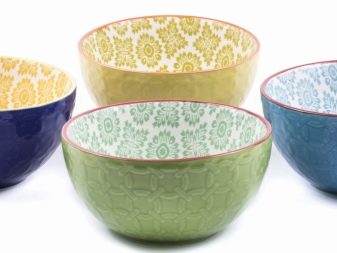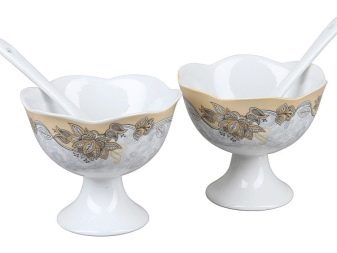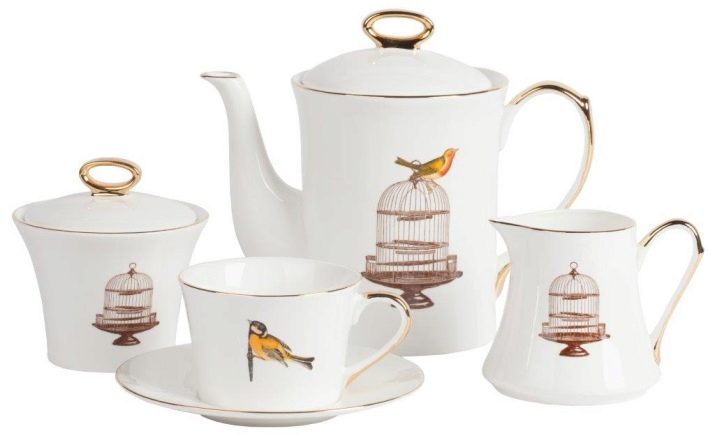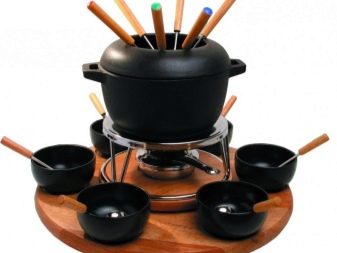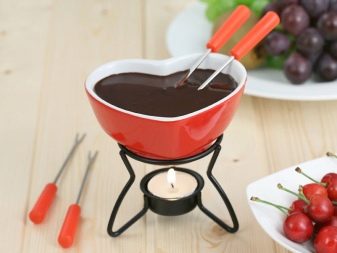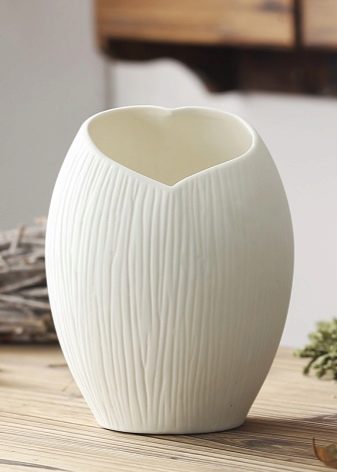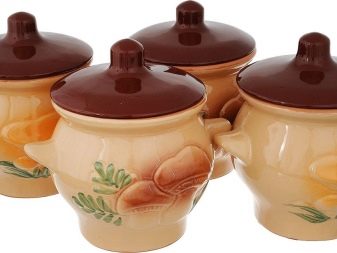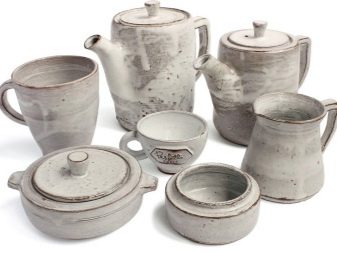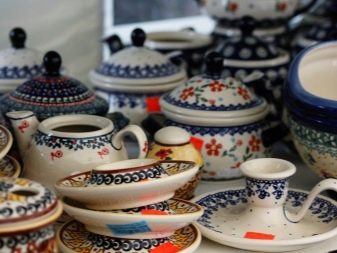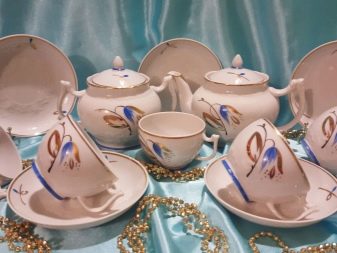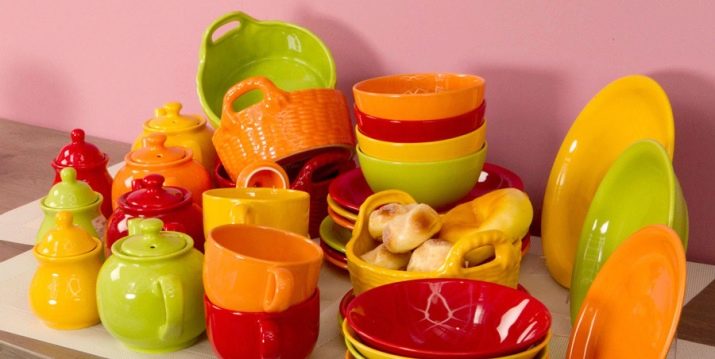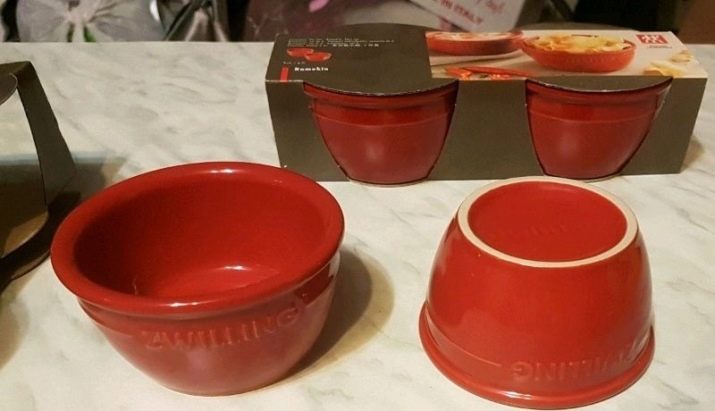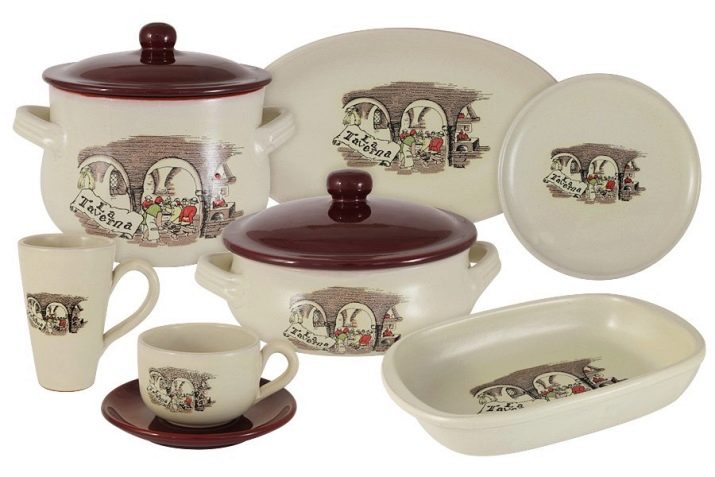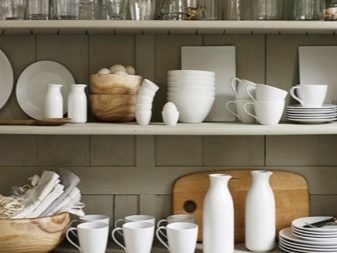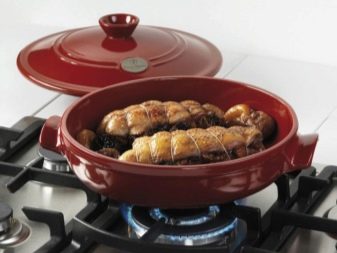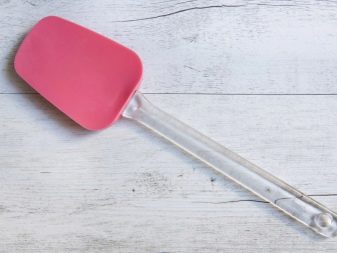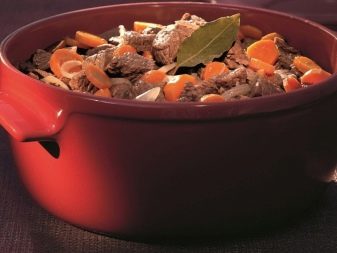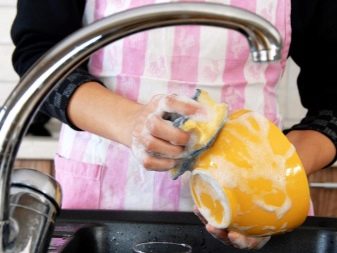Eating for a person is a very important process. But it is equally important what attributes of kitchen utensils are used, in which dishes the food is cooked, with what accessories the table is set. One of the most popular and common categories is pottery.
A bit of history
Most scientists believe that pottery originated in the Neolithic period. Just then, many people began to lead a sedentary lifestyle, moved to livestock breeding and growing crops. And for a normal existence was needed dishes. It was made of clay by firing. This made it possible to obtain sealed and durable containers for storing products of different consistency.
Making such dishes was more like modeling clay. Different shapes were given with the help of fingers. Interestingly, this was only a female craft.
Initially, clay was fired on fires at a rather low temperature indicator - about 600 degrees. Already with the development of this technology, special furnaces were started to be made, where with the help of blowing air, it was possible to significantly increase the temperature.
Given the simplicity of creation, it is clear that the first products of this type were very fragile. But in this case, people also found a way out and polished the dishes with a stone or wood. As the creation of such dishes became more and more important in human life, the products began to decorate. Usually it was about some patterns of the relief type. In addition, the containers began to provide clay pens. Also, many models of dishes made with color coating. Pigments for paint were extracted from the same clay.
The production of pottery reached its greatest prosperity in China about 4,000 thousand years ago. But in the form in which it is done today, it appeared here somewhere in the XIII century, at the time when the country was ruled by representatives of the Sung dynasty.
The Chinese have kept the recipe for making dishes very carefully, and for almost 4 centuries, the Europeans could not reveal it. Only in 1710, after two years of experiments, Johann Friedrich Böttger, the court German alchemist, managed to find a formula for pottery, which was almost identical to the Chinese one.
After that, the first European factory that produced ceramics was established in the German city of Meissen. It exists to this day. It should be said that its products have always been in great demand, including among aristocrats from Russia. There were so many orders that special days were created in which the enterprise manufactured products only for customers from the Russian Empire.
Advantages and disadvantages
As with any thing, ceramic tableware has both serious advantages and certain disadvantages. If we talk about the pros, we should mention the following:
- the ability to regulate the humidity and temperature of the prepared products, which became possible due to the porous structure of the ceramic itself, which first absorbs moisture, and then gives it away;
- no matter how much time such dishes are used, no scale is formed on it;
- it can store various dishes for a long time;
- food cooked in a ceramic dish has a rich taste and amazing aroma;
- It is completely safe from an environmental point of view, because it does not contain heavy metals, and when exposed to high temperatures, no carcinogens or toxins are released.
But it has its drawbacks:
- has a very high fragility;
- absorbs fat well, which is why it is not easy to wash it;
- absorbs and preserves the smell of cooked food for a long time, which may not please everyone;
- Moisture has a very negative effect on such dishes due to the high porosity of the material.
Varieties
It should be noted that the phrase "ceramic ware" is a very broad concept, which includes various types of tableware, as well as its various models. If we talk about the types, the main and most common can be called:
- porcelain;
- faience;
- terracotta
Porcelain version is created from white clay and has not only a small mass and an excellent aesthetic component. Such dishes are heat resistant, strong and perfectly resistant to the effects of various substances. With a slight impact on the surface, a clear and high sound is emitted.
Such a solution keeps heat and cool for a long time and can be called a kind of “thermos”. At the same time the dishes are very beautiful.
The faience variant is also made of white clay, but its strength is less, as is the heat resistance. The porosity of such dishes is significantly higher, which causes more noticeable absorption of odors and moisture, compared with the same porcelain. The strength of such dishes about 25% lower than china. This is also due to the lower firing temperature.
But terracotta dishes made of red clay. It is rarely glazed. After firing, its texture can become very diverse - coarse-grained, fine, with continuous or partial polishing. The color of such dishes can also vary from red to black. Today, such dishes have excellent moisture resistance, although this was not always the case.
Now let's say more about the specific models of dishes of this type. The first category that I want to say are tureen and pots. The latter are usually used for cooking and serving hot snacks, and if they have a large capacity, then for cooking and serving hot dishes. Various kinds of tureens are used to serve ready-made soups to the table when a large number of people are served at once.
Another category is serving dishes and plates. Such solutions from ceramics are usually used for serving tables of stylized enterprises. Manufacturers today offer a whole set of plates for serving the table, as well as dishes for serving cold snacks.
Also exist milk jugs, creamers, sauceboats and spice equipment. The first two names of ceramic dishes are used to supply milk and cream for tea and coffee. Sauceboats are necessary for serving cold sauces and have a handle and a drawn nose. Devices for spices are needed for serving the table.
If we talk about the minimum, then we are talking about pepper and salt shakers. Sometimes they can be supplemented with bottles for supplying vinegar and oil and cups for toothpicks.
There are also special Baking pottery under the name "Casserole". These are forms for baking, made of heat-resistant ceramics of various forms, including various figures with and without a lid. The table can be served on special stands made of wood or in rattan baskets.
There are special ceramic cocotteswhich are made in the form of small pots with a long handle or without it and having a small volume. They are commonly used for cooking and serving hot snacks.
Very popular with housewives and ceramic salad bowls and ice cream bowls. An interesting solution would be the original-shaped salad bowls, which make up a single whole, in a compiled form are similar to a partitioned dish. Salad bowls are used to serve natural vegetables, pickles, salads and pickles.
Another category is cups, sugar bowls, coffee pots and kettles. They are used for hot drinks and can be painted in a variety of colors.
There are also ceramic fonduewhich are usually made of heat-resistant ceramics and are complemented by saucers for sauces, as well as special forks of great length. Such decisions dates the opportunity to cook and decorate various dessert fondues.
Another type of dishes - ceramic vases plateauwhich are commonly used for beautiful confectionery presentations.
In general, as you can see, the range of ceramic dishes is very, very wide.
Manufacturers Overview
Now it will not be superfluous to tell about the manufacturers of ceramic tableware, whose products are presented on the Russian market.
If we talk about domestic manufacturers, then today their products are very well represented on the Russian market. Famous products of the Russian production "Borisov ceramics", whose plants are located in the Belgorod region. Also familiar to many products of the company. "Mansions Ceramics", producing saucers, vases, cups, teapots, mugs. By the way, this brand also offers handmade ceramics to potential buyers. It is, of course, more expensive, but the quality is beyond praise.
Many will be interested in brand products "Tarusskaya ceramics", which originates in 1974. Production is located in the same city in the Kaluga region. The company produces souvenirs, pots, vases and ceramic dishes. Also distinguished by high quality.
If we talk about products of foreign brands, then Italian, French, Portuguese, and Polish ceramics are on the domestic market. If we talk about the latter, the company's products are very interesting. Boleslawiec from the eponymous Polish city. This is a unique manufacturer of ceramic ware in terms of design, which is very popular not only in Russia, but also in its homeland.
Quite interesting products Dobrush Porcelain Factorythat is located in Belarus. Its products have a pleasant design, high durability, as well as good thermal properties.
Quite interesting ceramic products from the company Cesiro. This is a brand from Romania, which has established itself as a quality manufacturer of ceramic products of various types.
Very interesting products from Germany. The most famous German brand that manufactures ceramic products as well is Zwilling. This brand has existed for about 280 years and is considered the benchmark of German quality. Its ceramic products will be a godsend for any hostess.
Quality ceramic dishes are made in Italy. Firm De silva Known for its heat-resistant and very beautiful dishes made of red clay.
How to choose?
If you decide to buy ceramic dishes, it is better to make a choice in favor of a full set of dishes, because then all the elements in it will be of the same style and color. Today there are sets in different styles, for example, Provence. And all the dishes can be white or colored. It looks beautiful and aesthetic.
When purchasing dishes separately, you should also pay attention to the color, the presence of the pattern and design. In addition, when choosing, you should carefully check the surface of each object for the absence of chips and various defects.
It will not be superfluous to decide on the type of ceramics. The most excellent option for the kitchen will be the faience option, this material is suitable for both the gas stove and for roasting in the oven. Faience has an affordable price, and dishes from it are not afraid of temperature changes. There are more terracotta options, but they can not be put on open fire. After washing, they should be thoroughly cleaned.
Operating rules
Ceramic dishes will be an excellent solution for gas, electric and glass-ceramic cooktops.And it is better to use such dishes on the burners, which will be slightly smaller than the diameter of the pan and pan. And for cooking in the oven, the dishes should have handles that can be removed if necessary.
In order for the dishes to be whole as long as possible, you should avoid sudden temperature changes. For example, you should not put a cold frying pan on an already heated hob, and also put food into it immediately after you get them out of the refrigerator or freezer.
To mix products, it is better to use a spatula made of silicone or wood. Spoons made of metal and knives should be abandoned so that the surface was not scratched. The same can be said about washing with abrasives. If you need to clean the surface, it is better to do this with the help of ordinary dishwashing detergent and a sponge.
Care features
Caring for ceramic dishes is quite simple. And if you follow simple rules, the dishes will last a long time.
- Any ceramic dish should be washed in warm water with a few drops of detergent. In addition, such dishes should not immediately be placed in cold water after cooking. Otherwise, it may crack. Dishes can always be glued together, but the appearance will no longer be attractive.
- Under no circumstances should metal sponges be used for grinding. It will damage the surface of such dishes.
- If the dishes are glazed, then it can not be dried, because the moisture itself quickly evaporates on the clay. But if the dishes are unglazed, then everything is different. It should be wiped off after each wash and left completely open until dry. Otherwise, the moisture will be on it for a long time, and when such wet dishes are heated, it may crack.
If you store food in such dishes, then it should not be covered with a lid, because it will cause an unpleasant smell. Especially if we are talking about wet ceramics without glaze.
How do the ceramic dishes with their own hands, see the next video.
